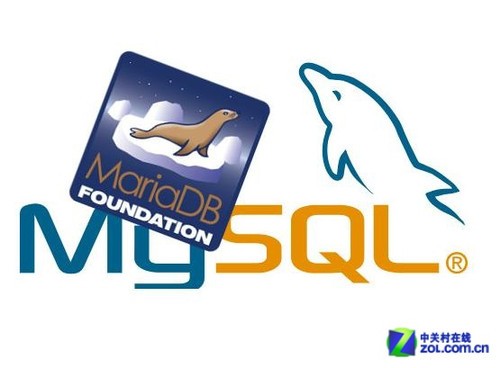How to use INNODB? Summary of how to use INNODB
This article mainly introduces the tutorial of MySQL to implement batch insertion to optimize performance. The running time is given to express the comparison after performance optimization. Friends in need can refer to it. For some systems with large amounts of data, the database faces In addition to low query efficiency, the problem is that it takes a long time for data to be stored in the database. Especially for reporting systems, the time spent on data import may last for several hours or more than ten hours every day. Therefore, it makes sense to optimize database insertion performance. After some performance tests on MySQL innodb, I found some methods that can improve insert efficiency for your reference. 1. One SQL statement inserts multiple pieces of data. Commonly used insert statements such as INSERT INTO `insert_table` (`datetime`, `uid`, `content`, `type`) VALUES ('0', 'userid_0'
1. 10 recommended articles about optimizing performance

Introduction: This article mainly introduces the tutorial of MySQL to implement batch insertion to optimize performance. The running time is given in the article to indicate the comparison after performance optimization. Friends in need can refer to the following For some systems with large amounts of data, in addition to low query efficiency, the problem faced by the database is that it takes a long time to enter the data into the database. Especially for reporting systems, the time spent on data import may last for several hours or more than a dozen times a day. hours. Therefore, it is very meaningful to optimize the database insertion performance. After some performance tests on MySQL innodb, I found some things that can improve the insert efficiency...
#2. Detailed introduction about optimizing performance

3.
Detailed examples of InnoDB database optimization
 ##Introduction: InnoDB is designed for maximum performance when processing huge data volumes for MySQL. Its CPU efficiency may not be matched by any other disk-based relational database engine. . Innodb is very popular in websites or applications with large amounts of data. Then it doesn’t need to be optimized. The answer is obvious:
##Introduction: InnoDB is designed for maximum performance when processing huge data volumes for MySQL. Its CPU efficiency may not be matched by any other disk-based relational database engine. . Innodb is very popular in websites or applications with large amounts of data. Then it doesn’t need to be optimized. The answer is obvious:
#4! . Detailed explanation of innodb_autoinc_lock_mode method with examples
##Introduction: The editor below will bring you an article Regarding the introduction of MySQL innodb_autoinc_lock_mode. The editor thinks it is quite good. I will share it with you now and give it a reference. Let’s follow the editor and take a look. 
Detailed example of innodb_flush_method method in mysql Value method (explanation with examples). The editor thinks it’s pretty good, so I’ll share it with you now and give it as a reference. Let’s follow the editor to take a look
6. Detailed explanation of the error of table primary key conflict when innodb_index_stats imports data

Introduction: The following editor will bring you an article on how to solve the problem of table primary key conflict when innodb_index_stats imports backup data. The editor thinks it’s pretty good, so I’ll share it with you now and give it as a reference. Let’s follow the editor to take a look.
7. Detailed example of innodb_autoinc_lock_mode in mysql

Introduction: The following editor will bring you a brief discussion of the expression form and value selection reference method of innodb_autoinc_lock_mode. The editor thinks it’s pretty good, so I’ll share it with you now and give it as a reference. Let’s follow the editor and take a look
8. MySQL transaction processing example explanation

##Introduction: Not all engines support transaction processing As mentioned in Chapter 21, MySQL supports several basic database engines. As discussed in this chapter, not all engines support explicit transaction management. MyISAM and InnoDB are the two most commonly used engines. The former does not support explicit transaction management, while the latter does. This is why the sample tables used in this book were created to use InnoDB rather than the more commonly used MyISAM. If your application requires transaction processing capabilities, be sure to use the correct engine type. Transaction processing can
9. Introduction to full-text search in MySQL

Introduction: Understanding Full-Text Search Not All Engines Support Full-Text Search As mentioned in Chapter 21, MySQL supports several basic database engines. Not all engines support full-text search as described in this book. The two most commonly used engines are MyISAM and InnoDB. The former supports full-text search, while the latter does not. This is why, although most of the sample tables created in this book use InnoDB, one sample table (the productnotes table) uses MyISAM. You should keep this in mind if your application requires full-text search functionality.
10. Explanation on the six major differences between the Mysql storage engine InnoDB and Myisam

Introduction: The difference in the composition of MyISAMInnoDB: Each MyISAM is stored as three files on the disk. The name of the first file begins with the name of the table and the extension indicates the file type. The .frm file stores table definitions. The extension of the data file is .MYD (MYData). The extension of the index file is .MYI (MYIndex).
[Related Q&A Recommendations]:
php - mysql error 1005 when creating a foreign key?
java - Row-level locks in innodb
php - mysql table type MyISAM, how to choose InnoDB in practice?
php - If the MySQL storage engine changes MyIsam to innoDB, will it cause data loss or other abnormalities?
myisam - Is InnoDB load data and select very slow in MySQL?
The above is the detailed content of How to use INNODB? Summary of how to use INNODB. For more information, please follow other related articles on the PHP Chinese website!

Hot AI Tools

Undresser.AI Undress
AI-powered app for creating realistic nude photos

AI Clothes Remover
Online AI tool for removing clothes from photos.

Undress AI Tool
Undress images for free

Clothoff.io
AI clothes remover

AI Hentai Generator
Generate AI Hentai for free.

Hot Article

Hot Tools

Notepad++7.3.1
Easy-to-use and free code editor

SublimeText3 Chinese version
Chinese version, very easy to use

Zend Studio 13.0.1
Powerful PHP integrated development environment

Dreamweaver CS6
Visual web development tools

SublimeText3 Mac version
God-level code editing software (SublimeText3)

Hot Topics
 1385
1385
 52
52
 Explain InnoDB Full-Text Search capabilities.
Apr 02, 2025 pm 06:09 PM
Explain InnoDB Full-Text Search capabilities.
Apr 02, 2025 pm 06:09 PM
InnoDB's full-text search capabilities are very powerful, which can significantly improve database query efficiency and ability to process large amounts of text data. 1) InnoDB implements full-text search through inverted indexing, supporting basic and advanced search queries. 2) Use MATCH and AGAINST keywords to search, support Boolean mode and phrase search. 3) Optimization methods include using word segmentation technology, periodic rebuilding of indexes and adjusting cache size to improve performance and accuracy.
 How do you alter a table in MySQL using the ALTER TABLE statement?
Mar 19, 2025 pm 03:51 PM
How do you alter a table in MySQL using the ALTER TABLE statement?
Mar 19, 2025 pm 03:51 PM
The article discusses using MySQL's ALTER TABLE statement to modify tables, including adding/dropping columns, renaming tables/columns, and changing column data types.
 When might a full table scan be faster than using an index in MySQL?
Apr 09, 2025 am 12:05 AM
When might a full table scan be faster than using an index in MySQL?
Apr 09, 2025 am 12:05 AM
Full table scanning may be faster in MySQL than using indexes. Specific cases include: 1) the data volume is small; 2) when the query returns a large amount of data; 3) when the index column is not highly selective; 4) when the complex query. By analyzing query plans, optimizing indexes, avoiding over-index and regularly maintaining tables, you can make the best choices in practical applications.
 Can I install mysql on Windows 7
Apr 08, 2025 pm 03:21 PM
Can I install mysql on Windows 7
Apr 08, 2025 pm 03:21 PM
Yes, MySQL can be installed on Windows 7, and although Microsoft has stopped supporting Windows 7, MySQL is still compatible with it. However, the following points should be noted during the installation process: Download the MySQL installer for Windows. Select the appropriate version of MySQL (community or enterprise). Select the appropriate installation directory and character set during the installation process. Set the root user password and keep it properly. Connect to the database for testing. Note the compatibility and security issues on Windows 7, and it is recommended to upgrade to a supported operating system.
 Difference between clustered index and non-clustered index (secondary index) in InnoDB.
Apr 02, 2025 pm 06:25 PM
Difference between clustered index and non-clustered index (secondary index) in InnoDB.
Apr 02, 2025 pm 06:25 PM
The difference between clustered index and non-clustered index is: 1. Clustered index stores data rows in the index structure, which is suitable for querying by primary key and range. 2. The non-clustered index stores index key values and pointers to data rows, and is suitable for non-primary key column queries.
 What are some popular MySQL GUI tools (e.g., MySQL Workbench, phpMyAdmin)?
Mar 21, 2025 pm 06:28 PM
What are some popular MySQL GUI tools (e.g., MySQL Workbench, phpMyAdmin)?
Mar 21, 2025 pm 06:28 PM
Article discusses popular MySQL GUI tools like MySQL Workbench and phpMyAdmin, comparing their features and suitability for beginners and advanced users.[159 characters]
 How do you handle large datasets in MySQL?
Mar 21, 2025 pm 12:15 PM
How do you handle large datasets in MySQL?
Mar 21, 2025 pm 12:15 PM
Article discusses strategies for handling large datasets in MySQL, including partitioning, sharding, indexing, and query optimization.
 How do you drop a table in MySQL using the DROP TABLE statement?
Mar 19, 2025 pm 03:52 PM
How do you drop a table in MySQL using the DROP TABLE statement?
Mar 19, 2025 pm 03:52 PM
The article discusses dropping tables in MySQL using the DROP TABLE statement, emphasizing precautions and risks. It highlights that the action is irreversible without backups, detailing recovery methods and potential production environment hazards.




